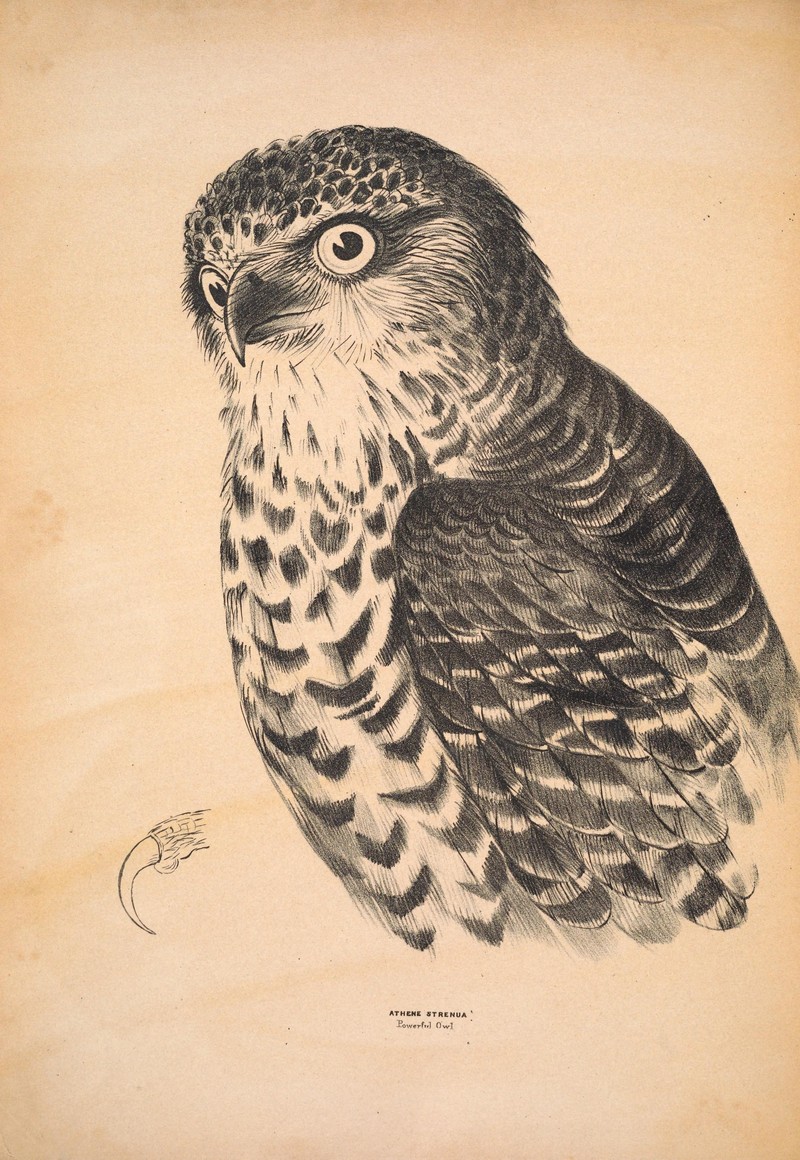|
| Query: Birds | Result: 2247th of 32675 | |
Powerful Owl (Ninox strenua)
| Subject: | Powerful Owl (Ninox strenua)
| | Poster: | Wiki Photos (---@---.---)
| |

| Resolution: 2158x3128
File Size: 2026528 Bytes
Upload Date: 2019:11:06 23:41:38
|
Athene strenua / Powerful Owl
Date 1877
Source https://www.flickr.com/photos/biodivlibrary/6943629871
Author Silvester Diggles; John Gould
Full title Companion to Gould's Handbook; or, Synopsis of the birds of Australia. Containing nearly one-third of the whole, or about 220 examples, for the most part from the original drawings.
taxonomy:binomial Athene strenua
taxonomy:binomial Ninox strenua
taxonomy:common_name Powerful Owl
Source: https://commons.wikimedia.org/wiki/File:Companion_to_Gould%27s_Handbook;_or,_Synopsis_of_the_birds_of_Australia_(Plate_9)_(6943629871).jpg
The powerful owl (Ninox strenua), also known as powerful boobook, is a species of owl native to south-eastern and eastern Australia, the largest owl on that continent. The powerful owl lives permanently in breeding pairs once in adulthood. These owls have been observed roosting singly, in pairs and in family groups of 3 to 4. They frequently roost during the day on branches in tall, open trees, often while still holding the prey caught the prior night.
Order: Strigiformes
Family: Strigidae
Genus: Ninox
Species: Ninox strenua (Latham, 1801) |
^o^
Animal Pictures Archive for smart phones
^o^
|
|